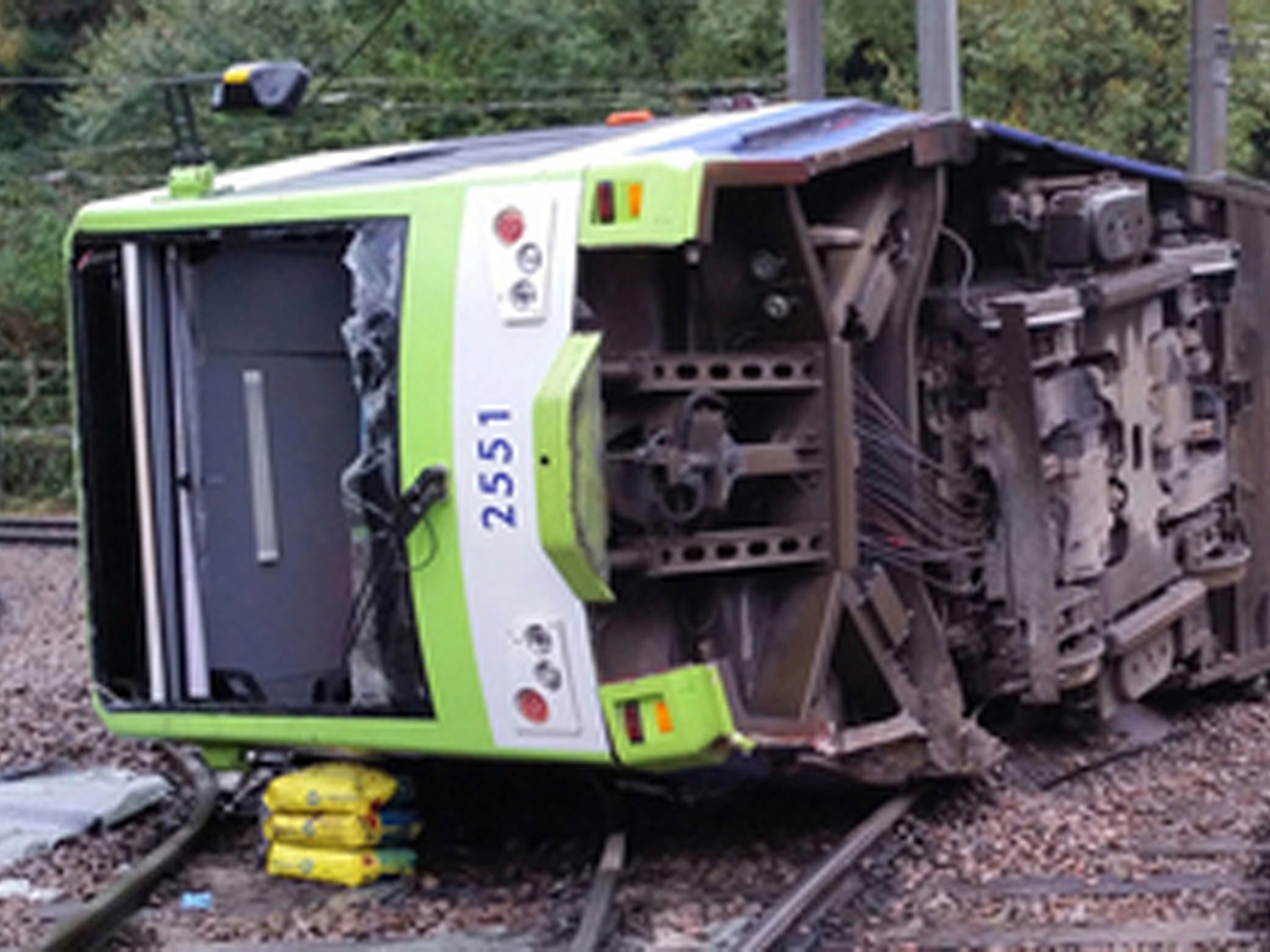Croydon tram crash: Driver was travelling at nearly four times speed limit when vehicle derailed killing seven
The tram was travelling at 50mph at a point in the track that has a 12mph speed limit

Your support helps us to tell the story
From reproductive rights to climate change to Big Tech, The Independent is on the ground when the story is developing. Whether it's investigating the financials of Elon Musk's pro-Trump PAC or producing our latest documentary, 'The A Word', which shines a light on the American women fighting for reproductive rights, we know how important it is to parse out the facts from the messaging.
At such a critical moment in US history, we need reporters on the ground. Your donation allows us to keep sending journalists to speak to both sides of the story.
The Independent is trusted by Americans across the entire political spectrum. And unlike many other quality news outlets, we choose not to lock Americans out of our reporting and analysis with paywalls. We believe quality journalism should be available to everyone, paid for by those who can afford it.
Your support makes all the difference.A tram that derailed and crashed in south London killing seven people and injuring 50 others was travelling at three-and-a-half times the speed limit, investigators have said.
The tram, which crashed in Croydon as it approached the Sandilands Junction at 6.07am on 9 November, was found to be travelling at around 50mph as it approached a sharp bend in the track, an interim report by the Raid Accident Investigation branch found. The speed limit at that part of the track is 12mph.
Investigators analysing the tram’s data recorder found the train was travelling at the maximum speed limit allowed on the network – 50 mph – as it approached the part of the track on which it derailed. The brakes were applied to the vehicle 180m before it crashed but this was only enough to slow it to 44mph as it approached the sharp bend in the track.
Passengers were trapped in the wreckage of the crash for hours after the tram tipped onto its side. The injured were taken to St George’s hospital in Tooting and to Croydon Hospital. A further eight people were said to be in a serious or life-threatening condition, with reports suggesting some people needed limbs amputating.
The passengers killed in the crash were named as Dane Chinnery, 19, Philip Logan, 52, Philip Seary, 57, Dorota Rynkiewicz, 35, and Robert Huxley, 63, all from New Addington, and Mark Smith, 35 and Donald Collett, 62, both from Croydon.
The tram’s driver, Alfred Dorris, 42, from Beckenham, south-east London, was arrested at the scene on suspicion of manslaughter. He has since been released on bail until May.
Mr Dorris has worked for First Group since 2008 and police are understood to be establishing whether he fell asleep or blacked out as possible lines of inquiry. There has been no reason indicated in the report as to why the tram was speeding.
Additionally investigation found no evidence of track defects or a malfunction in the tram’s braking system, but the RAIB has urged both Transport for London and First Group, which operates the tram network, to employ further safety measures such as a further speed restriction or additional warnings signs to reduce the risk of trams approaching the site of the crash “at an excessive speed”.

Simon French, Chief Inspector of Rail Accidents, said the investigation will “take some months to complete” but reassured those injured in the crash and the families of those killed that they would be kept updated throughout.
“Our ongoing detailed investigation will now look at the wider context of the accident, including the sequence of events, the way the tram was driven, the infrastructure and how people received their injuries,” he said.
Mr French said the investigation “will also be looking into previous occurrences of over-speeding in this area and underlying management issues” and will include recommendations to reduce the likelihood and consequences of similar events occurring in the future.
London’s Transport Commissioner Mike Brown said there current safety arrangements would be supported by additional temporary speed restrictions and signage, and that Transport for London is carrying out a thorough safety inspection and taking advice drom an independent panel of tram experts.
While engineers have repaired the track since the crash and trams have since run over the damaged section of the line, it has not yet reopened. Mr Brown said services would resume when a “rigorous assurance process” had been completed.
First Group chief executive Tim O'Toole said the company is working with TfL to follow the RAIB's advice and provide "clear instruction on this to our drivers".
The Aslef union said a lack of adequate safety systems was “at the root of this dreadful accident”.
Additional reporting by Press Association
Join our commenting forum
Join thought-provoking conversations, follow other Independent readers and see their replies
Comments